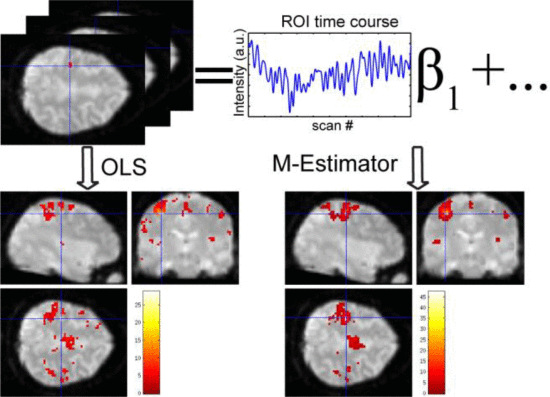Evaluation of Statistical Inference on Empirical Resting State fMRI.
Xue Yang, Hakmook Kang, Allen T. Newton, Bennett A. Landman, “Evaluation of Statistical Inference on Empirical Resting State fMRI.” IEEE Transactions on Biomedical Engineering. IEEE Trans Biomed Eng. 2014 Apr;61(4):1091-9. PMC24658234†
Full text: https://www.ncbi.nlm.nih.gov/pubmed/24658234
Abstract
Modern statistical inference techniques may be able to improve the sensitivity and specificity of resting state functional magnetic resonance imaging (rs-fMRI) connectivity analysis through more realistic assumptions. In simulation, the advantages of such methods are readily demonstrable. However, quantitative empirical validation remains elusive in vivo as the true connectivity patterns are unknown and noise distributions are challenging to characterize, especially in ultra-high field (e.g., 7T fMRI). Though the physiological characteristics of the fMRI signal are difficult to replicate in controlled phantom studies, it is critical that the performance of statistical techniques be evaluated. The SIMulation EXtrapolation (SIMEX) method has enabled estimation of bias with asymptotically consistent estimators on empirical finite sample data by adding simulated noise . To avoid the requirement of accurate estimation of noise structure, the proposed quantitative evaluation approach leverages the theoretical core of SIMEX to study the properties of inference methods in the face of diminishing data (in contrast to increasing noise). The performance of ordinary and robust inference methods in simulation and empirical rs-fMRI are compared using the proposed quantitative evaluation approach. This study provides a simple, but powerful method for comparing a proxy for inference accuracy using empirical data.
